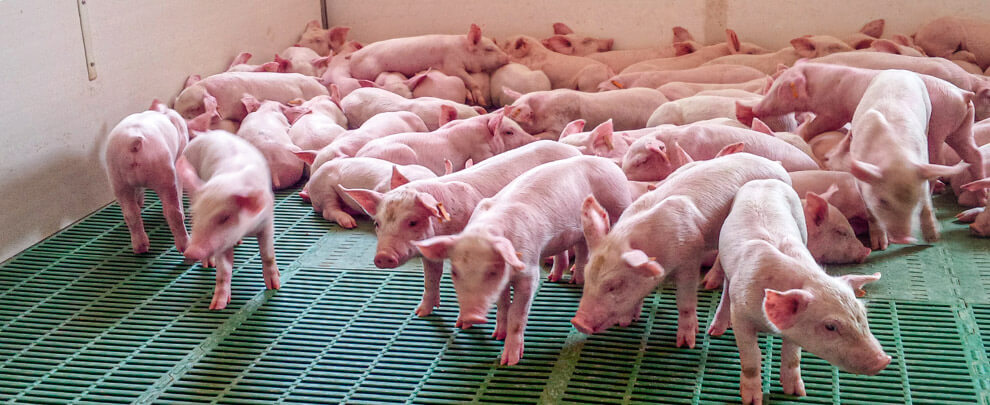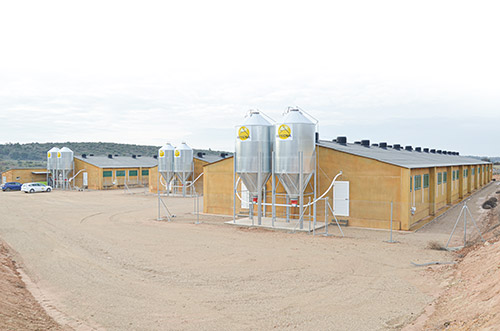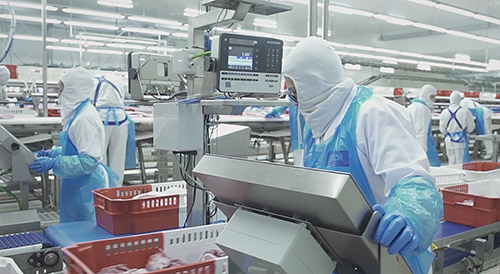Blog
Blog

How has COVID-19 affected the pig sector?
13 of October of 21 - News
The global crisis caused by the COVID-19 pandemic has put many sectors of our economy against the ropes, fighting day by day to continue their activity over the last few months. In this period, professionals in the pig sector (farmers, meat industry, transport, distribution, etc.) have done a great job. It has been possible to supply pork to the population. How has the sector managed to adapt to this challenging situation? What impact has the pandemic had on them? To know the answer to these questions, we spoke with Jaime Chico and Miguel Ángel Higuera, who offer us their take on these questions.
Adapting to a new reality
The arrival of the first coronavirus cases at our borders alarmed society, which with fear, uncertainty and ignorance, was forced to face a pandemic. These feelings also reached farms, where the priority was to maintain activity and produce with new protection systems. To cope with this unique situation, a protection guide against coronavirus was launched from the National Association of Pig Earners Producers (ANPROGAPOR) at the farm level to minimize contact between employees. “Farmworkers are aware of how work needs to be done to prevent animal infections, and what was done was to reinforce what was already done, that is to say, work to adapt these procedures to human protection, implementing measures such as maintaining the separation between people, minimize the number of people in common areas or avoid sharing vehicles.”, Miguel Ángel Higuera exposes, director of ANPROGAPOR, who considers that the result of the measures developed was successful and that the cases of contagion between employees were minimal: “We can say that pork sector workers’ preparedness for bioprotection and safety has been exemplary”.
In the meat industries and feed factories, the situation was not significantly different. To continue supplying society with pork, it was necessary to continue producing and maximize safety. As Jaime Chico, CEO of Agri-food Chico, comments, “it was about protecting our people, but not as we were used to doing, but against a pandemic in which we required a series of PPE that, suddenly, was difficult to acquire due to their scarcity “. And he adds: “We spent 15 very intense days, in which we worked to structure the templates, we reinforced shifts and created bubble groups to continue production. Despite the risk of coming to work, people were brave and went to their jobs anyway”.
“Pork sector workers’ preparedness for
bioprotection and safety has been exemplary”.
Equally important were the efforts made by logistics to avoid pork shortages, especially in large areas. In this sense, transportation was not affected since, considered an essential service, the time and mobility limitations imposed by the authorities had a minimal impact in this regard. However, the closure of the Horeca canal and the increase in consumer demand did alter transport, and distribution programs, so significant efforts were necessary to avoid shortages. On the other hand, particular concerns arose that complicated work regarding international transport, especially in the large seaports. This, in one way or another, had an impact on the global pork market.

Exterior view of a pig farm. Photo: Rotecna.
The impact on the meat market
According to official data regarding the last decade, in 2020, international sales of agri-food products have doubled (in 2010, they were around 28,000 million euros). They have grown at a much higher than the average rate since Spanish global exports only increased 40% in the same period. Thus, in an exercise marked by the COVID-19 pandemic, the sector again demonstrated its character and increased its sales abroad. However, it should be mentioned that, in 2020, sales of the food industry overseas would have dropped slightly 0.9% had it not been for China and its massive pork purchases.
Despite the atypical situation, 2020 has been a very successful year in pig exports, since almost three million tons have been reached, with a value close to 7.65 million euros. In the first two months of 2020 alone, 438,000 tons of pork worth 1,200 million euros were exported by Spain, representing 10.5% and 46%, respectively, compared to the same period in 2019. Despite this increase in exports, container traffic problems in China, due to the impact of the coronavirus, caused concern in exporting companies. In the following months, they saw how their exports to their main client decreased and did not recover until the middle of the year. However, it must be said that this is a cyclical trend repeated every year, although this time, the coronavirus has aggravated it. Despite this, of the total Spanish exports of 2020, around 40% went to China. “In summer, the price was much more competitive, causing China to import much more meat. In addition, the fact that Germany could not export to China due to PPP cases, caused Spanish exports to increase even more”, explains Higuera.
"Despite the atypical situation, 2020 has been
a very successful year in pig exports."
So, in 2020 China established itself as the primary client of the Spanish pork sector, absorbing almost 40% of exports in volume and nearly 30% in value; exports to other traditional markets such as Portugal, France, South Korea or the Philippines fell back.
The strong demand of the Asian giant would demonstrate, as Chico maintains, that “despite the concern that the coronavirus has generated, added to the one that has caused the recovery of production in the Asian giant and to the strong tensions that exist, the Chinese market still has a long way to go, although possibly without the increases we have seen so far. So we will have to offer products with more added value”.

The food industry has been active throughout the pandemic. Photo: Interporc.
Consumption
“People have been forced to stay at home and, if we add to the confinement the fact that pork is a regular food, this has caused that household consumption has not been greatly affected,” Higuera says. However, the closure of the channel Horeca has had an impact, for example, on the processed or Iberian. As Chico explains, “Iberian and cured products had tough times during 2020, since its consumption is more associated with restoration, so, at a general level, consumption data is not bad, but there is a difference between what is consumed in hospitality and what has been consumed in homes”.
To enhance this consumption that has been lost in Horeca, different television campaigns have been launched from the interprofessional of pigs, taking advantage of the increase in television consumption caused by confinement. In this sense, Higuera explains that “the campaigns launched have had a greater impact than other years, and the one carried out to encourage the consumption of Iberian in homes had a frankly positive impact”. Furthermore, the pandemic has fueled the sale online dramatically, which in 2020 experienced growth due to confinement. For Chico, the increase in this channel marks the beginning of a multi-channel stage, in which the online will be one more. “This sale will remain there, but we have to see how we complement it with the other channels and how we enhance it since selling our product online is not an easy task either,” he says.
With everything mentioned above, if we consider the closing down that the Horeca channel has suffered for months, with the consumption improvement and the consolidation of new channels, forecasts point to a stabilization stage in pork consumption.
Future opportunities
The situation experienced in the last year and a half has shown that the pig sector has been one of the sectors that has adapted best and coped with the pandemic. In this sense, Chico asserts that “within the meat sector, pork has played a fundamental role and this should be shared for people to know about it”. And he adds: “We are becoming leaders, and we must convince people to support us and help us improve”.
On the improvement routes to be implemented, Higuera mentions developing a rural economy and resources. “We have to have tools capable of reducing emissions, and that has to be key to empower and position our sector”.
“Pork sector has played a fundamental role and
this should be shared for people to know about it.”
For his part, Chico adds: “We must invest in innovation and make our industries more sustainable. Digital innovation must move us forward, while the digitization of our work centres and teams must help us to understand our animals better and improve their well-being”.
Finally, we must not forget the opportunities offered by opening new foreign markets and consolidating most of the existing ones. In this way, Spanish pigs must take advantage. They will do so of the opportunities offered by countries such as China, aware that the sector applies a highly demanding production model in terms of sustainability and animal welfare, food safety and quality.






